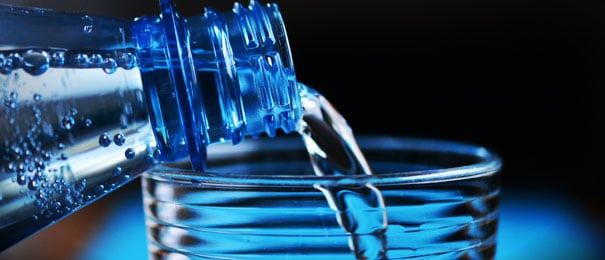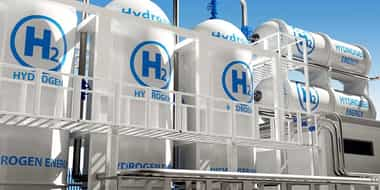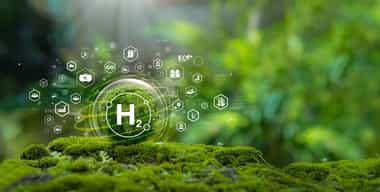
Aug 10, 2018
Blog Energy & Sustainability Birth of the Bottled Water Industry
Bottled water has been around for centuries, but the brands and tastes have changed remarkably through the decades. In this excerpt from the BCC Research report Global Markets for Bottled Water Products, analyst Natraj Pandal explores the major milestones in the industry leading up to the 21st century.
For additional insight into the bottled water market, check out our report, Bottled Water Processing Equipment Market.
Bottling water began in the United Kingdom with the first water bottling at the Holy Well in 1621. The demand for bottled water was fueled in large part by the resurgence in spa-going and water therapy among Europeans and American colonists in the 17th and 18th centuries.
Visits to natural springs and spas became fashionable among the wealthy elite during the 19th and early 20th centuries. The American bottled water industry was started in 1844 when a Maine innkeeper, lying on his deathbed, discovered the remarkable therapeutic properties of water from his local spring. As the popularity of the water grew with visitors, the inn turned into a spa resort and the family began to sell the water under the brand of Poland Spring. In France, waters from mineral springs like Evian, Vittel and Perrier were popular in the early 20th century, and patients returning from a “cure” brought back supplies of water to continue their cure at home. A modest demand for bottled mineral waters developed in pharmacies. The bottled water industry remained small until the 1960s, when the development of large-scale retail surfaces (supermarkets, hypermarkets) boosted demand for new categories of groceries. This allowed mineral water to be moved from the pharmacy to the grocery category.
The first commercially distributed water in America was bottled and sold by Jackson’s Spa in Boston in 1767. Early drinkers of bottled spa waters believed that the water at these mineral springs had therapeutic properties and that bathing in or drinking the water could help treat many common ailments.
The popularity of bottled mineral waters quickly led to a market for imitation products. Carbonated waters developed as means for approximating the natural effervescence of spring-bottled water, and in 1809 Joseph Hawkins was issued the first U.S. patent for “imitation” mineral water. As technological innovation in the 19th century lowered the cost of making glass and improved the production speed of bottling, bottled water was able to be produced on a larger scale and the beverage grew in popularity.
Bottled water was seen by many as a safer alternative to 19th century municipal water supplies that could be contaminated with pathogens like cholera and typhoid. By the middle of the century, one of America’s most popular bottlers, Saratoga Springs, was producing more than 7 million bottles of water annually.
In the United States, the popularity of bottled water declined in the early 20th century when the advent of water chlorination reduced public concerns about water-borne diseases in municipal water supplies. However, it remained popular in Europe, where it spread to cafes and grocery stores in the second half of the century. In 1977, Perrier launched a successful advertisement campaign in the U.S., heralding a rebirth in popularity for bottled water. Today, bottled water is the second most popular commercial beverage in the United States, with about half the domestic consumption as soft drinks.
In 1973, DuPont engineer Nathaniel Wyeth patented polyethylene terephthalate (PET) bottles, the first plastic bottle to be able to withstand the pressure of carbonated liquids. Today, PET plastic has replaced glass as the preferred material for single-serving bottled water containers due to its light weight and resistance to breaking.
Bottled water manufacturing is not a new industry. However, it has changed significantly over the years. Water spas and the bottling of natural mineral waters were already well established by the mid-1800s. In North America, Poland Spring water was first bottled for sale in 3-gallon glass demi-johns in 1845. In Europe, Perrier began producing and selling bottled water in 1863. In South America, São Lourenço bottled water appeared in Brazil in 1890.
The introduction of plastic bottles in 1968 made the packaging of larger water volume possible, including 1.5-liter bottles, the most popular size today in many countries. In the late 1960s, Perrier, with its signature small green bottle, further transformed the industry through the use of mass advertising. Until then, Perrier had been known primarily as a bar “mixer.” The company’s first major slogan, “Perrier, c’est fou!” (“Perrier, it is crazy!”), sought to take the brand beyond the older whisky-drinking generation and capture younger consumers. The ad was so effective that future campaigns could play with meaningless variations on the same words (“Perrier, c’est pou!”) and be instantly recognizable. The success of Perrier sparked imitation.
In France, Evian and Vittel reacted by also escalating branding and advertising expenses. Each player emphasized a different image. Perrier focused on a fun and young image. Evian had targeted sales for infants (the baby bottle segment) since the 1960s, and its advertising emphasized its purity, although during the 1970s, as the brand moved to large retail surfaces, it tended to emphasize the idea of everyday use. By the mid-1980s, the top four companies in France accounted for some 80% to 85% of sales. The growth of the market, however, had encouraged the opening or reopening of many springs, and some of these producers tended to sell on price with no advertising support, at the bottom end of the price spectrum.
By 2001, the top three companies—Nestlé, which owned the Perrier, Vittel and Contrex brands, among others; Danone (Evian, Badoit and Volvic) and Neptune (low-price brands such as Cristaline and Saint-Yorre)—controlled 63% of bottled water volumes sold in France.
The consolidation pattern seen in France did not occur worldwide, or even throughout Western Europe. For example, by 2001, the top four companies controlled about 60% of bottled water volumes sold in Italy; 48% of volumes sold in Spain; 42% in the U.S.; 35% in the U.K.; and 24% in Germany. Then, as now, bottled water-consuming countries all differ in customer preferences, distribution channels and the competitive dynamics that shape market structure. These countries exhibited differences in customer preferences, distribution channels and competitive dynamics that shaped their market structures.
A major change in the industry came with the introduction of purified waters by PepsiCo (Aquafina) in 1994 and Coca-Cola (Dasani) in 1999. In contrast to spring water companies, which typically extracted water from underground aquifers and springs, these companies used municipal tap water filtered through reverse osmosis systems that removed impurities from the water. This move allowed Coke and Pepsi bottlers to use their existing purification equipment (used in the production of soft drinks) and existing distribution channels. Because water did not have to be transported from a single original source, this development allowed the development of strong national (or even global) brands that were produced locally. Aquafina and Dasani were launched with strong advertising campaigns and mid-tier pricing, and quickly gained market share.
About 115 billion liters of bottled water were sold worldwide in 2001, for a total retail value (including channel markups) of about $67 billion. Over the four years following 2001, volume had grown 11%, while value had grown by 5.8%. These global statistics masked huge differences in penetration around the world. Western Europe accounted for about 38% of the total global value, North America about 23%, Latin America about 16% and the rest was divided among other regions. Bottled water consumption per capita also varied heavily: about 92 liters in Western Europe, 60 liters in the US. Within Western Europe, consumption differed markedly, from 159 liters in Italy, 142 liters in France, 134 liters in Spain, 104 liters in Germany, but only 23 liters in the U.K.
However, markets with greater per capita consumption also experienced lower growth. Annual volume growth from 1998 to 2001 in Western Europe was about 5.5%, versus 9.2% in the U.S. Within Western Europe, growth rates differed, from 2.3% in Germany to 10.5% in Spain. The main selling attribute of bottled water was its purity. Many brands emphasized the purity of their springs, which originated typically from underground aquifers in remote locations far from pollution sources. For example, San Pellegrino boasted that: “As it flows underground, protected from sources of pollution, it [water] acquires its mineral salt composition and bacteriological purity.” In contrast, tap water mostly came from rivers and lakes and had to travel great distances and pass through routes that were perceived as unclean before reaching the tap. Bottled water gained in popularity as a light, rehydrating alternative to calorie-rich soft drinks or caffeinated drinks that could dehydrate the body.
By 2002, the global bottled water industry was at an inflection point. Traditionally, the industry had been fragmented among many local and regional players, but over the last decade four large multinationals—Danone, Nestlé, PepsiCo and Coca-Cola—battled for global market share. These four companies controlled over 30% of the global market in 2002 and continued to expand organically and through acquisitions. During this period nearly impossible to tell apart by taste, and for which a free substitute existed (tap water), it was not clear whether these global players would be able to create an attractive industry structure that would deliver sustained profits.
The U.S. market was one of the main fronts in the battle for market position among these multinationals in 2002. In contrast with Western Europe, which had large but mature demand for bottled water, the U.S. market had tripled during the 1990s as health-conscious customers increasingly turned to bottled water. Nestlé, which had acquired the bottled water business of Perrier in 1992, was the clear market leader with many of the strongest regional spring water brands. However, the growing market had attracted new entrants, both small and large. Brands like Fiji and Glaceau sought a premium position. Yet it was the aggressive entry by PepsiCo in 1994, followed by Coca-Cola in 1999 with new business models based on purified waters and substantially different economics that had disrupted the industry structure.
By 2002, the competitive escalation was starting to produce adverse effects. Since 2001, bottled water prices had dropped by 3% and some analysts feared that a possible price war could erode industry profitability. Faced with tougher competitive conditions, Nestlé, PepsiCo, Coca-Cola and Danone had to re-assess their strategic postures and commitments to the U.S. bottled water market.
For more information about the global market for bottled water, download a free overview of our report, Bottled Water Processing Equipment Market.

Electrical switches—devices that control the flow of electricity—are the backbon...

As the world accelerates toward net-zero emissions, hydrogen, and ammonia have e...

Hydrogen technology is widely used across industries like glass, fertilizer, met...

We are your trusted research partner, providing actionable insights and custom consulting across life sciences, advanced materials, and technology. Allow BCC Research to nurture your smartest business decisions today, tomorrow, and beyond.
Contact UsBCC Research provides objective, unbiased measurement and assessment of market opportunities with detailed market research reports. Our experienced industry analysts assess growth opportunities, market sizing, technologies, applications, supply chains and companies with the singular goal of helping you make informed business decisions, free of noise and hype.